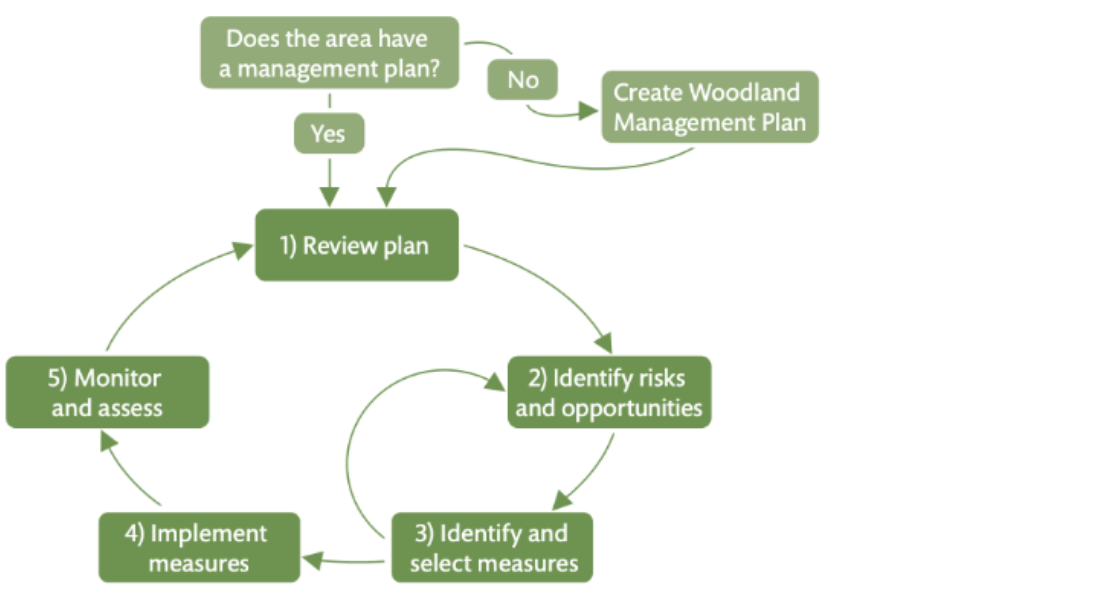The following framework provides forest and woodland managers with a step-by-step approach to tackling the impacts of climate change and increasing resilience through adaptation.
The framework can be integrated into ongoing management planning.
Active management of forests and woodland is critical for increasing resilience, and can range from implementing adaptation measures through to regular monitoring and evaluation. As the climate is changing rapidly it is important that management activity is not just reactive, (e.g. felling in response to statutory tree health notices), but anticipates future change and adopts measures that are likely to reduce impact.
Given the complex nature of forestry including multiple management objectives and different soil types, local climate and site characteristics, there is no single formula to follow when considering climate change adaptation.
Instead, owners and managers need to think through their own individual objectives, survey their site and use decision-making tools to select the most appropriate measures accordingly.
This is where the 5-step adaptation framework comes in. Click through each step below for guidance.

Source: UK Forestry Standard Practice Guide ‘Adapting forest and woodland management to the changing climate’.
A woodland management plan provides a structured way for land managers to ensure their woodland is sustainably managed to a common industry standard. It is a requirement of the UKFS (UK Forestry Standard) that a management plan is in place. In addition, a plan needs to be in place to apply for local felling licences and to apply for grants from the forestry authorities.
While a forest management plan is a UKFS requirement, we understand there may not always be a woodland management plan in place for smaller woodlands. The myForest online platform, managed by the Sylva Foundation, enables woodland owners or agents to register for free and map and manage their woodlands. It also enables you to create woodland management plans using Scottish Forestry and Forestry Commission templates.
If a woodland management plan isn’t yet in place, the 5-step adaptation framework can still be largely followed, if a more informal plan is created to capture, for example, structure and composition of the woodland, risks and issues and management objectives e.g. conservation, biodiversity, timber production etc.
The UKFS Practice Guide ‘Adapting forest and woodland management to the changing climate’ guides practitioners through the process from assessing climate change risks to implementing adaptation measures.
Printed copies are available to purchase from Forest Research.
Printed copies are available to purchase from Forest Research.
"*" indicates required fields
